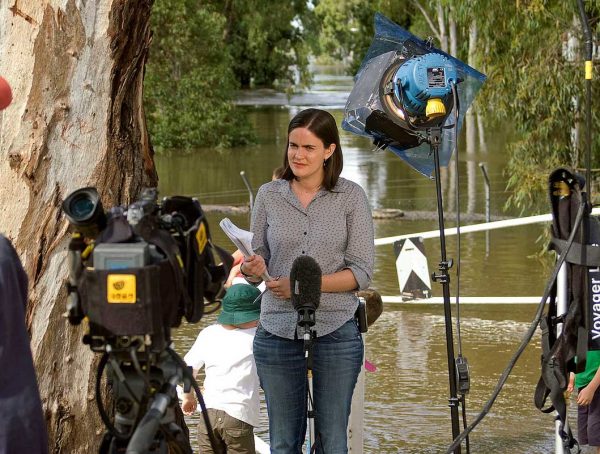 “You should never add to a crisis with your reporting.” Voice coach Ann Utterback says that was never more true than on September 11, 2001. But she says it doesn’t take a tragedy of that proportion to call for a delivery that is focused and calm in the midst of crisis. “An event happens in every city every day that calls for a thoughtful delivery that does not add to the crisis at hand.” So what kind of delivery works in times like these? Here are some of Ann’s tips.
“You should never add to a crisis with your reporting.” Voice coach Ann Utterback says that was never more true than on September 11, 2001. But she says it doesn’t take a tragedy of that proportion to call for a delivery that is focused and calm in the midst of crisis. “An event happens in every city every day that calls for a thoughtful delivery that does not add to the crisis at hand.” So what kind of delivery works in times like these? Here are some of Ann’s tips.
“First, never shout at your listener. In live shots when there is noise and confusion around you, this is a difficult thing to remember. But that is the time when a calm delivery is most needed. If you use September 11 as a benchmark, you can remember how much you personally wanted to hear the events described in a way that did not make the crisis seem worse. That same feeling is in the mind of at least one viewer you talk to about a story every day. Perhaps an accident has happened on the route their loved one drives home from work, or the school where their child attends has been evacuated for an emergency. To them, it is September 11 all over again. They are frightened and confused, and they need to hear the facts about the situation in a way that will not inflame their fears. Your job is to give it to them in that way.
“I often tell clients that every piece they do on television has the potential of becoming an archival treasure for someone who is listening. They will tape it and show it to friends and family for years to come. It is your responsibility, therefore, to deliver every track knowing this is the case. If their husband was killed in a train wreck, you should not be shouting your live shot at them. Imagine them listening to you shout the story every time they watch that tape. They need to be told about the wreck in a voice that is caring, focused, and calm. Remember, you should never contribute to the crisis with your delivery.
“Here in Washington, D.C., a local anchor on the CBS affiliate recently celebrated her thirtieth anniversary at the station. J.C. Hayward has become a fixture in Washington television. An article in The Washington Post ended with a quotation from Dave Roberts, the news director at WUSA. “You cannot fake being genuine,” he said. This says it better than I can.
“In order to give viewers what they want, you have to genuinely feel the emotions of what you are reporting. This cannot be faked. You have to forget about being a television person or an announcer or anything other than a feeling human being. Of course, if you are reporting on a controversial subject such as a court case, there is no room for your emotions in the reporting. But look for the times when you are reporting on what I call universal emotions like natural disasters, children being hurt or killed, or joyful moments, and let your feelings come through in your voice to a small degree. Certainly no tears or overt emotions are ever appropriate, but there is nothing wrong with slowing your pace in a sad story or pausing more. Simply letting your viewer know that you understand the universal emotions in the stories you are reporting will give you the delivery that is genuine.”
Ann’s tips bring to mind other situations where a frantic delivery may not only be a disservice to your viewers, it could make a situation worse. When you’re covering a civil disturbance, for example, keep your delivery deliberate and your words neutral to avoid inflaming an already unstable situation, especially if you’re reporting live. Your own safety may be at stake.
Of course, it’s not easy to stay calm when the adrenaline is pumping in a breaking news situation. It’s even possible to be unaware that you’ve increased the pace, volume and pitch of your delivery. But if you know it can happen, you’re a step ahead. Ask the photographer you’re working with to listen closely to your delivery to help keep you on pace. News managers back at the station also should keep an ear on live shots and feeds from crisis situations. They may be in the best position to tell how a report will come across to a viewer, and can offer guidance if the reporter needs to tone down his or her delivery.
For more tips, check Ann Utterback’s Web site at www.avoicedoc.com or her 2005 book, Broadcasting Through Crisis, How to Keep Going When Tragedy Hits.








